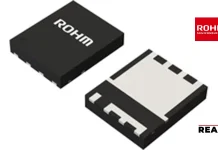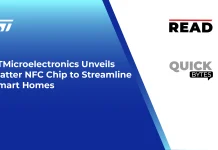Synaptics Incorporated announced the SYN4778—the smallest, lowest power, most accurate Global Navigation Satellite Systems (GNSS) IC for the Internet of Things (IoT). The chip draws 80% less power and comes in a package that is 30% smaller than comparable devices while providing a 50% improvement in accuracy. It extends battery life, reduces product size, and enhances the performance of advanced location-based services (LBSs) for IoT devices such as wearables, as well as mobile accessories, asset tagging and tracking systems, drones, and transportation navigation.
CES 2023: See the SYN4778 GNSS IC, and our other game-changing wireless solutions, at the Venetian Hotel, Level 2 Exhibitor, Bellini Ballroom, #2105. Email press@synaptics.com for an appointment.
Also Read: Sesen Bio and Carisma Therapeutics Announce Substantial Increase to Expected Special Cash Dividend
The GNSS receiver typically consumes an out-sized portion of available power in battery-powered IoT devices. The SYN4778’s advanced 7-nm semiconductor process and on-chip power management greatly reduce this power draw. In addition, the chip uses both the L1 and L5 satellite bands to reduce the GNSS chip’s time to first fix (TTFF) by 35% and the power consumed for first fix by 72%. Fast, low-power TTFF greatly improves the end-user experience, while lower overall power and smaller footprint give product developers the ability to extend battery life and shrink the overall product size. Alternatively, they can add more device functionality and features—such as biometrics, movement, or ambient sensors—for a given product power budget and form factor.
“Synaptics provides a unique combination of short-range wireless and GNSS capabilities — making us a one-stop shop for high-performance IoT,” said Brandon Bae, Sr. Director of Product Marketing at Synaptics. “With the SYN4778, we’re now able to add more location-based functionality as a significant differentiator for handheld and wearable IoT device developers who can now also couple GPS with complementary localization features such as Bluetooth’s High Accuracy Distance Measurement (HADM). The market response has been overwhelmingly positive, and we already have design wins with key customers.”
“Low-power GNSS chips are key to opening up the market to a wide variety of IoT products where battery life is important,” said Phil Solis, research director at IDC. “Many of these applications also have size constraints while still requiring the highest possible performance to accommodate advanced services. The key differentiation GNSS ICs can provide means discrete implementations for IoT products continue to form a significant portion of the total market for GNSS chips.”
Additional SYN4778 features include:
- Advanced multipath interference mitigation using L5 band signals from GPS, Galileo, BeiDou, NAVIC, SBAS, and Quasi Zenith Satellite Systems (QZSS)
- LTE jamming and signal filtering, and continuous—highly parallel—search and track of the complete GNSS channels (including the L5 band) for greater positioning accuracy for LBS applications, particularly in urban environments
SOURCE: Globe Newswire




